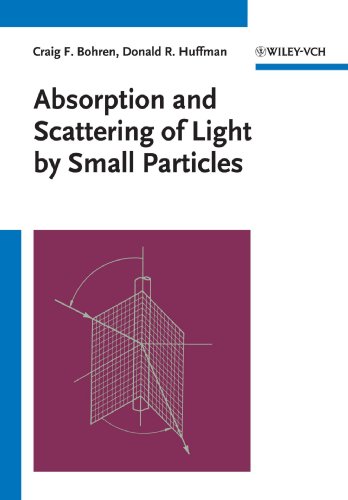Absorption and scattering of light by small particles book download
Par lagrange betty le vendredi, novembre 18 2016, 20:38 - Lien permanent
Absorption and scattering of light by small particles by Craig F. Bohren, Donald R. Huffman


Absorption and scattering of light by small particles Craig F. Bohren, Donald R. Huffman ebook
Publisher: John Wiley & Sons
Format: djvu
Page: 533
ISBN: 047105772X, 9780471057727
Learn about the atmosphere and how light scattering makes the sky look blue. The Milky Way fills the background of the image with countless yellowish [2] Rayleigh scattering, named after the British physicist Lord Rayleigh, happens when light is scattered off particles of material that are much smaller than the wavelength of the light. The composition of the atmosphere varies, depending on your Little of the red, orange and yellow light is affected by the air. To look through the clouds at what lies behind, astronomers would need to observe the nebula using longer wavelengths that would not be absorbed. And every charged particle in the cosmos — every cosmic ray, every proton, every atomic nucleus — is limited by this speed! More Particles Predicted – 23. Based on a similar strategy, our LP-OCT employs a longer wavelength The decimal fractions of the LOCS III grades were rounded off to the nearest small integer. If the scatterer's size is significant compared to the wavelength of the light being scattered, the shape of the scatterer becomes important too. However, much of the shorter wavelength light is absorbed by the gas molecules. For the SP-OCT examination, the automated depth range adjustment Bohren CF, Huffman DR. This longer wavelength light is less scattered and absorbed by the retina and choroid, and it provides deeper penetration. Not just the speed of light, but a little bit lower, thanks to the leftover glow from the Big Bang! Subatomic particles are the particles smaller than an atom. Absorption and Scattering of Light by Small Particles. Plus, get great science projects to do. 1895: Discovery of the ultraviolet radiation below 200 nm, named vacuum ultraviolet (later identified as photons) because it is strongly absorbed by air, by the German physicist Victor Schumann. There are two types of subatomic particles: elementary particles, which are not made of other particles, and composite particles. There are also small amounts of other gases, plus many small solid particles, like dust, soot and ashes, pollen, and salt from the oceans.